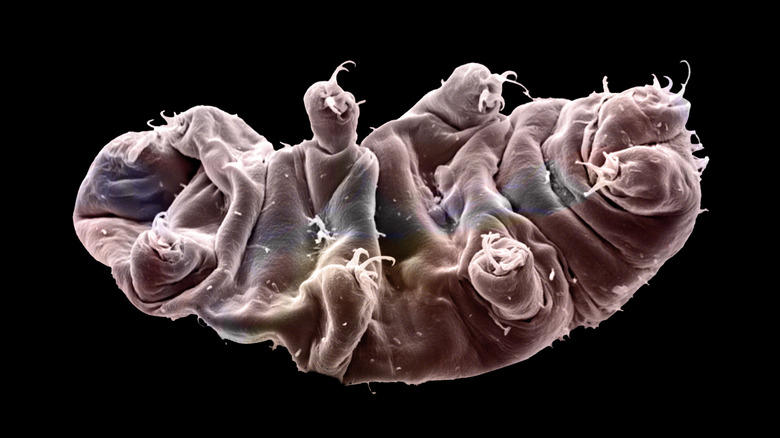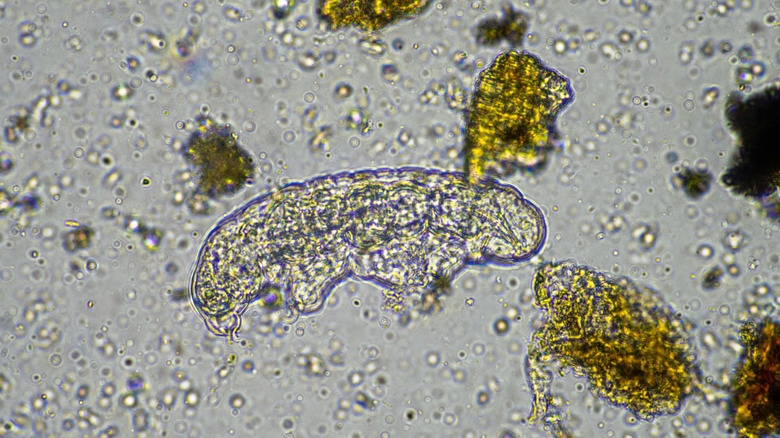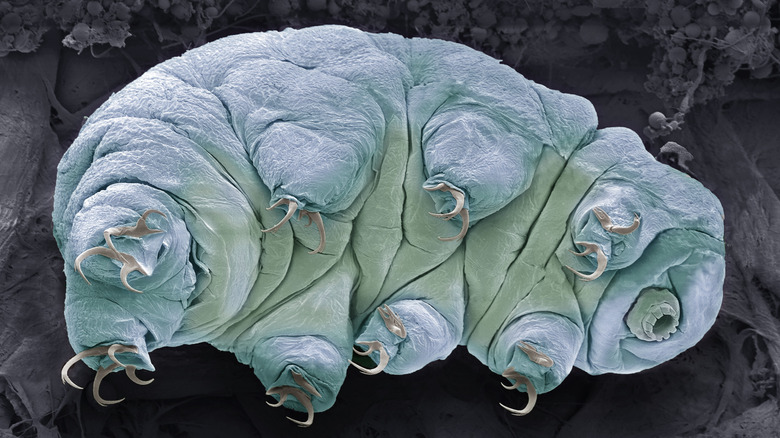The Most Durable Organism On Earth Looks Like Moving Glass Under A Microscope
Nature has produced some incredibly hardy animals, from the bowhead whale which can live at least two centuries to the crocodile that's lived longer than most people ever will. But while there are several animals that have remarkably long lifespans, there are others that are in a whole other category: organisms that are just insanely hard to kill.
We've all heard the myth that cockroaches can withstand nuclear detonations, which as it happens is just that: a myth. The invertebrates actually couldn't weather the intense heat of a nuclear explosion nor the resulting shockwave, but they are still one of the toughest organisms in existence, able to regrow limbs and resist pesticides. That said, even cockroaches can't compare to the most durable organism on Earth: the tardigrade.
Discovered by German pastor J.A.E. Goeze in 1773, the tardigrade is a microscopic eight-legged creature which measures less than 1 millimeter in length and can be found everywhere from oceans to deserts. The tiny organism earned the nicknames "water bear" and "moss piglet" due to the fact it needs to be surrounded by a thin layer of water in order to prevent dehydration and its overall squishy appearance. Of course, that appearance is only visible under a microscope, which aside from revealing the tardigrade's incongruously cute morphology, also reveals a surprisingly delicate appearance.
The strangely delicate appearance of the Tardigrade under a microscope
Tardigrades are microscopic invertebrates with a head and four body segments, each of which has a pair of legs. At the end of each of these eight legs are claws which can differ between species (there are more than 1,300 species of tardigrade). Interestingly enough, the hind legs of the tardigrade attach to the body backwards, which makes the creature unlike any other animal. The most popular images of tardigrades reveal pudgy creatures that very much live up to the "water bear" nickname, but actually looking at tardigrades under a microscope reveals translucent creatures that look more like moving glass.
As videos reveal, these hardy creatures look surprisingly flimsy in closeup. Tardigrades are seen moving slowly, with complex bodily functions working within their outer skin layer, which is known as a cuticle. The animals actually absorb oxygen through their skin, due to the fact they have no lungs or heart, which is then dissolved into the liquid, known as hemolymph in their bodies. As the tardigrade moves, the liquid in their bodies is squeezed, and a sort of oxygen-rich slush is moved around their bodies in a crude form of circulation. Along with the transparent appearance of the tardigrade, this gives the creature the look of a kind of delicate, liquid globule — not exactly the kind of thing you'd expect from nature's most indestructible organism.
Tardigrades are one-of-a kind organisms
Given their delicate appearance, it might not be surprising that tardigrades actually have short lifespans, typically living for anywhere from a few months to two years. But it's not their appearance or their lifespan that makes them so remarkable. These tiny creatures are capable of extending their lives by years or even decades by entering a state known as cryptobiosis, during which they squeeze all water from their bodies, suspend their metabolism, and retract their head and legs to become a ball. This allows them to survive for long periods when conditions become unfavorable.
Cryptobiosis aside, the "water bear" moniker doesn't quite convey the sheer resilience of the tardigrade, which is nature's most indestructible organism. A study published in Current Biology not only confirmed that tardigrades could survive the vacuum of space, but that certain specimens could endure exposure to solar radiation and come out the other side. If that's not enough to convince you of the tardigrade's remarkable resilience, how about the fact that researchers shot the organisms out of a light gas gun at speeds of nearly 3,000 feet per second and they survived the impact? Not bad for a tiny bear with glass skin.


